While headlines of the NFL offseason so far have been more concerned with stories on free agent moves, the upcoming 2010 NFL Draft Class, and rules to improve player safety and change the rules governing playoff overtime, an undercurrent of the league’s operations at the moment is consideration of broadening the NFL brand through either relocation or legitimate expansion. Commissioner Roger Goodell has done little to disguise his desire to potentially expand the league into Europe—what with the yearly NFL International Series game in England—despite the fact that the NFL’s old developmental league, NFL Europa, did not catch on as well as hoped. Outside of the commissioner’s moves across the pond, the Buffalo Bills have also been giving up a home game at Ralph Wilson Stadium each year to play one game at the Rogers Centre in Toronto, Ontario, Canada; with team owner Ralph Wilson in his 90’s and ownership poised to change hands when he passes away, there are grumblings that Toronto could have the lone Canadian NFL franchise in the next few years.
Despite these international interests, the most likely recipient of an NFL franchise within American borders has to be the city of Los Angeles, California; the city hosted the Los Angeles Rams from 1946 through 1994 and the Los Angeles Raiders from 1982 to 1994, so there is precedent for a franchise in the area. A proposed Los Angeles Stadium (located in Industry, California) has gotten approval from the state government, and potential owner Edward P. Roski (who is a minority owner of the NBA’s Los Angeles Lakers and the NHL’s Los Angeles Kings) is ready to break ground on the stadium once the NFL commits a franchise to the city.
According to a December 2009 interview with John Semcken III, director of Majestic Realty (the developer behind Los Angeles Stadium), there is a 50/50 chance of a team coming to Los Angeles for the 2010 season—now just months away—and a 100% chance of a team playing at the stadium for the 2011 season. While such discussion seems a bit hyperbolic, it is clear that the NFL would have an interest in bringing a team to such a large market.
The teams that have been most often connected to discussion of relocation to Los Angeles include the previously-mentioned Buffalo Bills, the Jacksonville Jaguars, and the St. Louis Rams. Though the interview video linked above also mentions the Minnesota Vikings, San Diego Chargers, Oakland Raiders, and San Francisco 49ers, it seems less likely that any of those more well-established franchises would be in danger of relocation. I also find it hard to imagine the NFL bringing two franchises to Los Angeles as suggested in the interview to share the stadium, as there are already enough headaches coming from the continuing stadium-sharing situation at the new Meadowlands Stadium with the New York Giants and New York Jets. Los Angeles is certainly a big enough market for two teams, but the Rams and Raiders were both in town at the same time and that was unsuccessful; the NFL will want to exercise discretion in their return to the area.
Of the teams that seem likely, the Bills do not seem to be as likely candidates anymore, given their Ontario flirtations, but the Jaguars and Rams both seem to be legitimate choices for the league; the people of Jacksonville aren’t coming out to support their team anymore, resulting in local TV blackouts of games, and the Rams just finished a 1-15 season in 2009 that has them selecting with the #1 pick of the upcoming NFL 2010 Draft.
The difficulty involved with a proposed relocation of a franchise to Los Angeles is much greater than it would appear from the outside, however. Los Angeles has had two teams in the NFL before, and both the Raiders and Rams had to move away because of poor ticket sales and other issues with team owners. The city has also become a major college football town with the success of the University of Southern California Trojans, who play in L.A. and are a football staple with the locals.
Financial viability is not the biggest concern, however, because it would be hard to argue that a Los Angeles team would do less business than the teams being mentioned as potential relocation targets. With a franchise relocation, the NFL would have to face the serious issue of re-establishing division setups; something that was just done in 2002 with the expansion to 8 divisions and the addition of the Houston Texans.
The NFL has a new re-branding setup for the 2010 season, with playoff logos and trophies seeing alterations; however, the logos for the American Football Conference and National Football Conference are also seeing changes. Each logo will now have 4 stars—previously, the AFC logo had 6 and the NFC logo had 3—to represent the 4 divisions in each conference. Aside from allowing the NFL to sell more merchandise, these conference logo redesigns represent a commitment—at least, for the time being—to a four-division setup. This has implications on potential franchise relocation.
The maps below represent the geographic distribution of NFL franchises in the AFC and the NFC as of the close of the 2009 NFL season. Each team name is circled by the color coordinated with the division they play in, but in general it is clear that there is an east coast slant to the franchises. It is also important to look at the Bills, Jaguars, and Rams in particular, as these are the teams being mentioned as candidates in the relocation; the Bills are a good fit for the AFC East, the Jaguars make sense in the AFC South, but the Rams are a considerable distance away from their NFC West rivals.
After researching the eight divisions to figure out the mileage between stadiums for teams within each division, I arrived at the following results for divisions with the furthest average trip for divisional games.
The NFC West is the most geographically-separated division, followed closely by the AFC West—due mainly to the location of the Kansas City Chiefs. The AFC and NFC East come in 3rd and 4th respectively, but this is due to the Miami Dolphins in the AFC East and the Dallas Cowboys in the NFC East. The South divisions come in 5th and 6th, and the NFC North and AFC North feature the shortest distances between teams in the league.
With this divisional breakdown in mind, I experimented with three potential models of how franchise relocation could take place to put one of the three suggested teams in Los Angeles.
Model #1: The Bills move to L.A.
If the Buffalo Bills were moved to Los Angeles, the AFC East would be without a fourth team. Due to geographic reasons, a Los Angeles team would make the most sense staying in the AFC and becoming part of the West division, as it would be significant travel for AFC East teams to play divisional games. The AFC East would need to incorporate a new member, and I would nominate the Jaguars so that the division would have two cold-weather teams and two warm-weather teams, along with a new in-state divisional rivalry between the Jaguars and Dolphins.
Moving the Jaguars to the AFC East would leave an opening in the AFC South, so I would suggest moving the Kansas City Chiefs to the AFC South, since they are close to the teams in that division. This would leave the AFC West with four teams: the LA team, the Chargers, the Broncos, and the Raiders—three California teams in the same division might be a tough sell, however.
In this model, the AFC East, AFC South, and AFC West would all have one new member. This would be a destructive model, admittedly, because the American Football League rivalries that are preserved in the current AFC East and AFC West divisions would be upset. One of the original AFL franchises (Buffalo) would be gone and the Chiefs would lose their AFL divisional rivalries with San Diego, Denver, and Oakland. The Chiefs would also move into a tough AFC South and may be less competitive than they already are in the AFC West.
From a geographic standpoint, however, the divisions would have a much more suitable alignment. Though the AFC East would have an average trip of 902.74 miles instead of the current 861.93, they would have an even split between teams in the northeast and teams in the southeast. The AFC South would go from 743.88 miles on an average trip down to 648.41 miles with the Chiefs instead of the Jaguars. The AFC West would see the biggest change, as they would go from a prior average trip distance of 1144.7 miles—2nd highest in the league—down to 687.37 miles.
Model #2: The Jaguars move to L.A.
The Jaguars seem to be the most likely candidate for relocation to Los Angeles, and the terms of that relocation model would be similar to the first model discussed here, only without any impact on the AFC East. The Jaguars would move to Los Angeles and join the AFC West, as they don’t make sense in the AFC South, and the Chiefs would move to the AFC South as a replacement.
This model is slightly less destructive from a historic rivalry standpoint, but the AFL rivalries maintained in the AFC West would still be affected by the loss of the Chiefs, and the introduction of the Chiefs to the AFC South might hurt their feasibility as a competitive division member.
The AFC South would again go from 743.88 miles on an average trip down to 648.41 miles with the Chiefs instead of the Jaguars. The AFC West would see the same big change, going from the prior average trip distance of 1144.7 miles down to 687.37 miles.
Model #3: The Rams move to L.A.
This third, and least-destructive, model would move the St. Louis Rams back to Los Angeles for the new franchise. The franchise would not be moving from its current division, which means that the divisional rivalries would remain intact. The move would also significantly cut down on the average travel distance for the NFC West: instead of the prior 1445.91 miles—1st overall in the NFL—the average distance traveled for a divisional game would be 813.06. The division would still in the middle of the pack because of the long distance to Seattle, but the travel distance would be much improved.
These three models are the proposals that make the most sense to me as an outside football observer based on the information that has slipped out about the NFL’s plan for football in Los Angeles at this point in time. While prevailing opinion seems to have placed a target on Jacksonville as the prime franchise to be relocated, there’s no guarantee that such a move will be made. It could just as easily be the Bills or the Rams that find themselves moving to the west coast.
The truth is, whatever happens with regard to a potential Los Angeles NFL franchise, the league will have to take a long, hard look at the structure of their divisions to figure out how best to organize the league to accommodate a fourth team in the state of California. The NFL might even surprise us all with some model akin to the changes that occurred in 2002, when the Seattle Seahawks ceased being an AFC West team and moved to the NFC West to accommodate the addition of the expansion Houston Texans in the 2002 divisional restructuring.
Further, the NFL may even feel the need to preserve the AFL rivalries and make a move like they did back in 2002 when they placed the Dallas Cowboys in the NFC East—despite the obvious geographic nonsense—in order to preserve their historic rivalries with the New York Giants, Philadelphia Eagles, and Washington Redskins.
Whatever the league decides to do, should an NFL team come to Los Angeles, one thing is certain: it will require some careful planning to keep everybody happy.
So what are your thoughts on these potential relocation models? Which one do you think would be most likely? Which one might be most interesting from a football perspective? Do you believe that there is a 100% chance of football in Los Angeles for the 2011 season (a season which may be locked out due to the potential labor issue)? Let me know in the comments below.
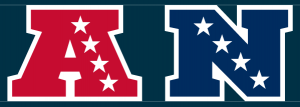
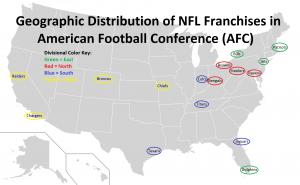
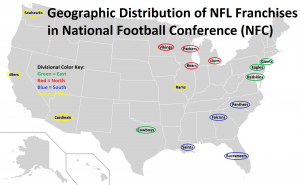
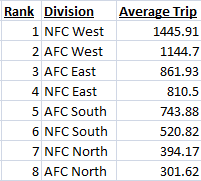
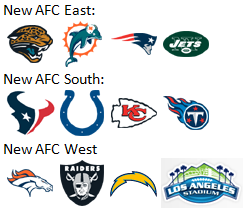
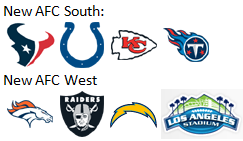



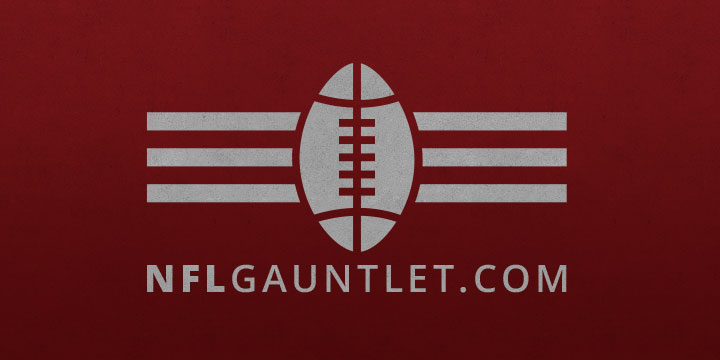

cant be having 3 California Teams in the AFC west.
How about the Cowboys joining the NFC West but stay in Dallas and the Rams join the NFC East but stay in St. Louis. The Colts joining the AFC East but staying in Indy and the Dolphins joining the AFC south and stay in Miami?